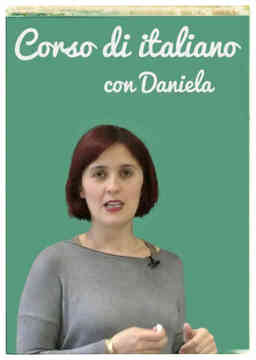









Difficulty:
 Beginner
Beginner
Italy Lucano
Serena is still shopping for clothes, and looks at some pretty flashy shoes. In the end, though, she goes for the jacket, and she fishes in her bag for the cash. She gives us a good example of how the plural is used when talking about euros. Euro is both singular and plural in Italian. So whether we're talking about soldi (money) or euro (euros), Italians think in the plural!
Difficulty:
 Beginner
Beginner
Italy
This lesson is about bene (well, fine). An important difference between bene and bello (beautiful) and buono (good) is that it's an adverb, and therefore doesn't have to agree with nouns. It always stays the same.
Difficulty:
 Beginner
Beginner
Italy Lucano
Go clothes shopping with Serena, who's looking for something nice for a festa, as well as some everyday wear.
Difficulty:
 Beginner
Beginner
Italy Neapolitan
Daniela goes into more detail about the difference between bello (beautiful) and buono (good) and clears up any doubts you may have.
Difficulty:
 Beginner
Beginner
Italy Neapolitan
If you know the rules regarding masculine and feminine articles, word endings, and plurals in Italian, you'll get it right most of the time. But there are some important exceptions which Daniela addresses in this lesson. They just have to get memorized!
Difficulty:
 Beginner
Beginner
Italy Lucano
Serena and Martina take you to a shop that sells both home health care products and beauty aids. This kind of shop is called a sanitaria, coming from the word, sanità (health). If you ever (heaven forbid!) need a wheelchair, ace bandage, neck brace, or even orthopedic shoes, this is the place to go. Today, Serena and Martina are shopping for more glamorous items.
Difficulty:
 Beginner
Beginner
Italy Neapolitan
It can be challenging for non-native Italian speakers to really understand the difference between these three common words: bello (beautiful, nice, pretty), buono (good) and bene (well, fine). In this first part of three, Daniela explains the difference between bello and buono.
Difficulty:
 Beginner
Beginner
Italy
More spring cleaning! Marika shows us how to dust, and what materials to use. She goes on to wash the windows, and then the dishes.
Difficulty:
 Beginner
Beginner
Italy Sicilian
How do three buddies, who happen to be oxen, get eaten by a lion? Adriano tells the tale, complete with the lesson to be learned. Have you guessed? It's one of Aesop's Fables.
Difficulty:
 Beginner
Beginner
Italy Sicilian
Adriano shares with us the story of the fox and the cicada. Apart from the usefulness of the story itself, there's a good selection of verbs in tenses we don't use every day, but which are used in storytelling.
Difficulty:
 Beginner
Beginner
Italy Sicilian
Spring is here and Cettina is enjoying the outdoors. Flowers are starting to bloom, trees are getting leaves, and the sunshine is warm enough to go without a jacket.
Difficulty:
 Beginner
Beginner
Italy
It's time for spring cleaning. Marika shows us how, and more importantly, she gives us the names of the tools we'll need.
Difficulty:
 Beginner
Beginner
Italy
Daniela explains how easy it is to form the plurals of feminine nouns, even if you don't know their meaning.
Difficulty:
 Beginner
Beginner
Italy
What are the rules for the masculine plural articles? Daniela explains them to her class, and to us!
Difficulty:
 Beginner
Beginner
Italy Neapolitan
Daniela has already taught us the singular definite articles in Italian. Today she starts teaching us the masculine plural definite articles.
Are you sure you want to delete this comment? You will not be able to recover it.